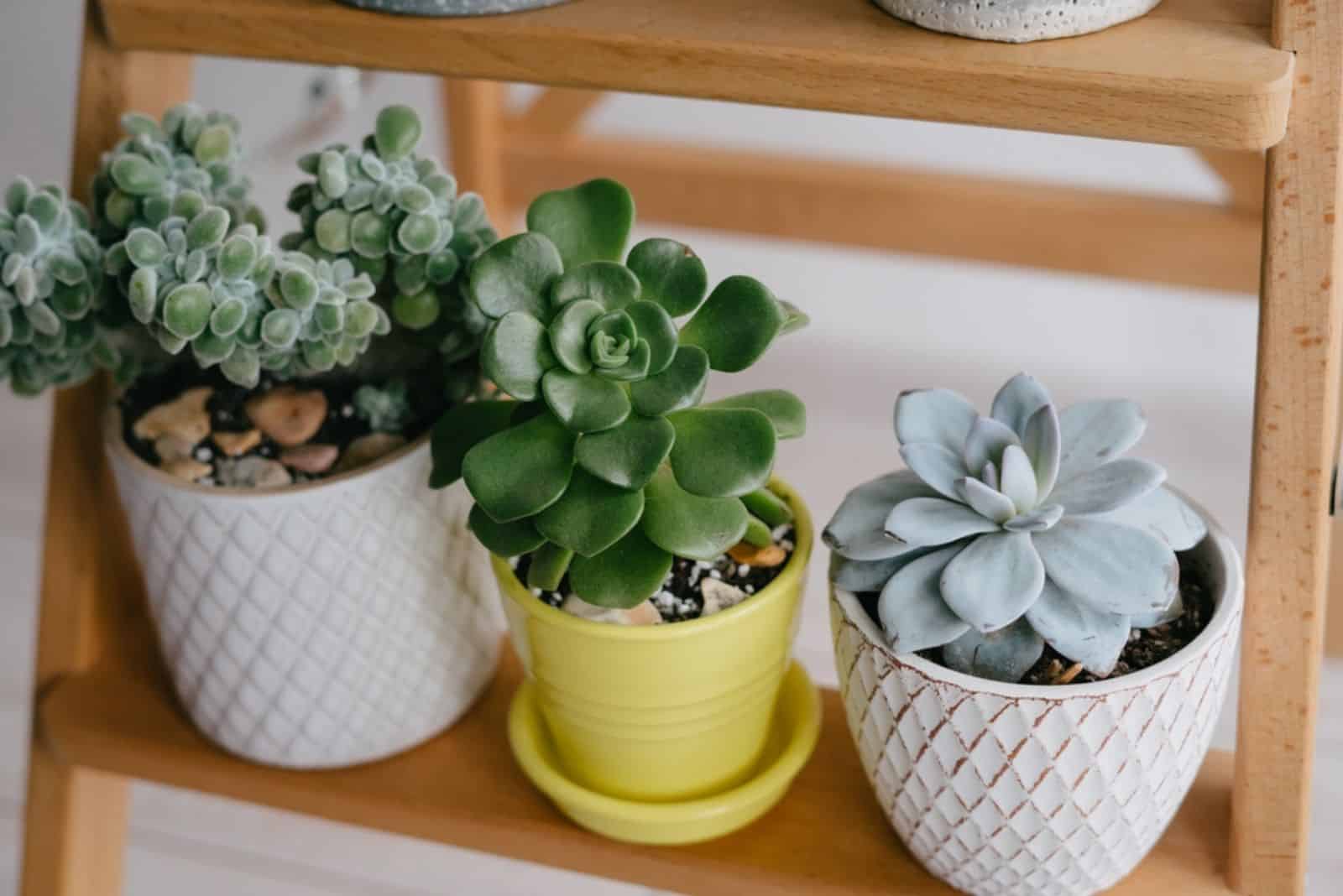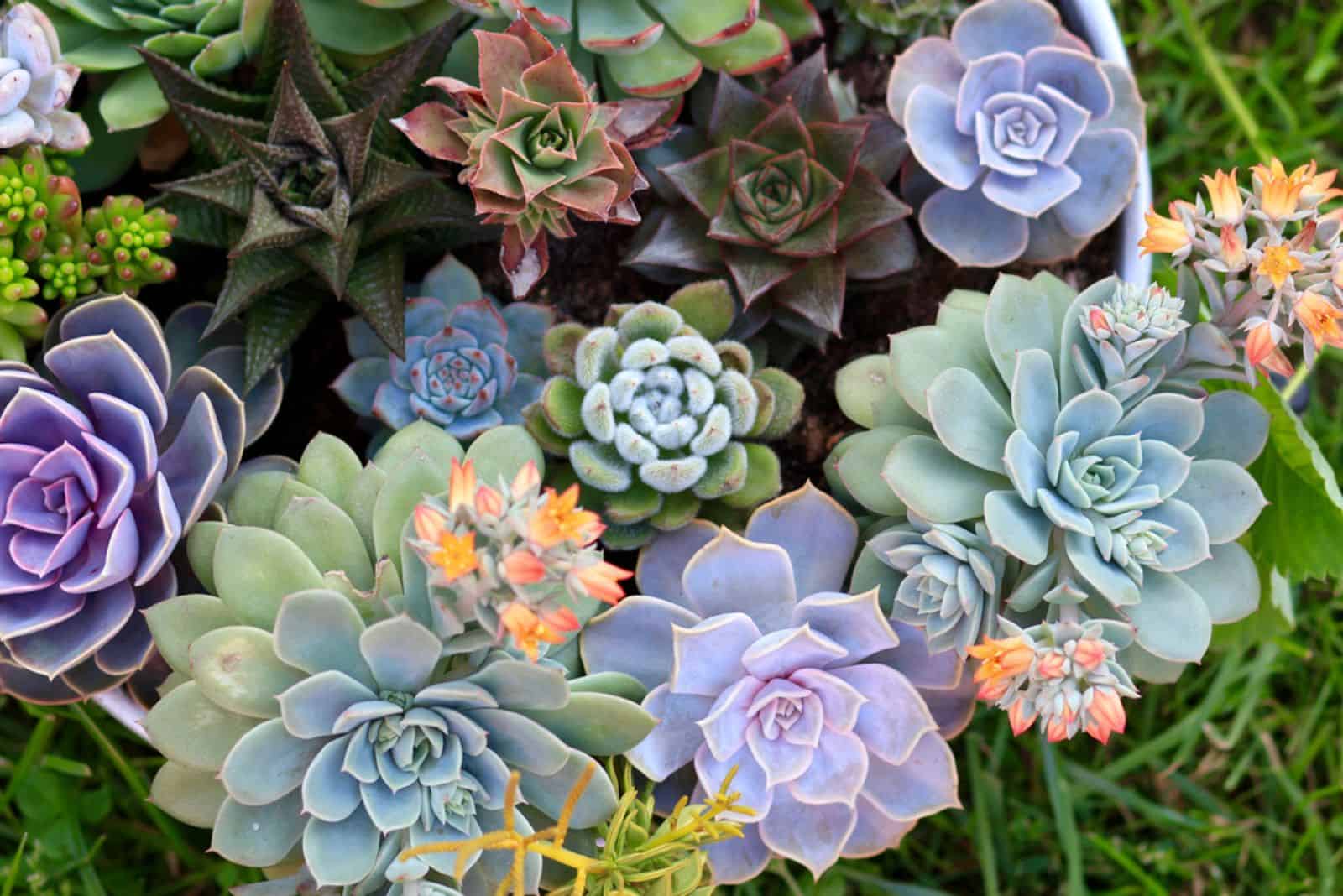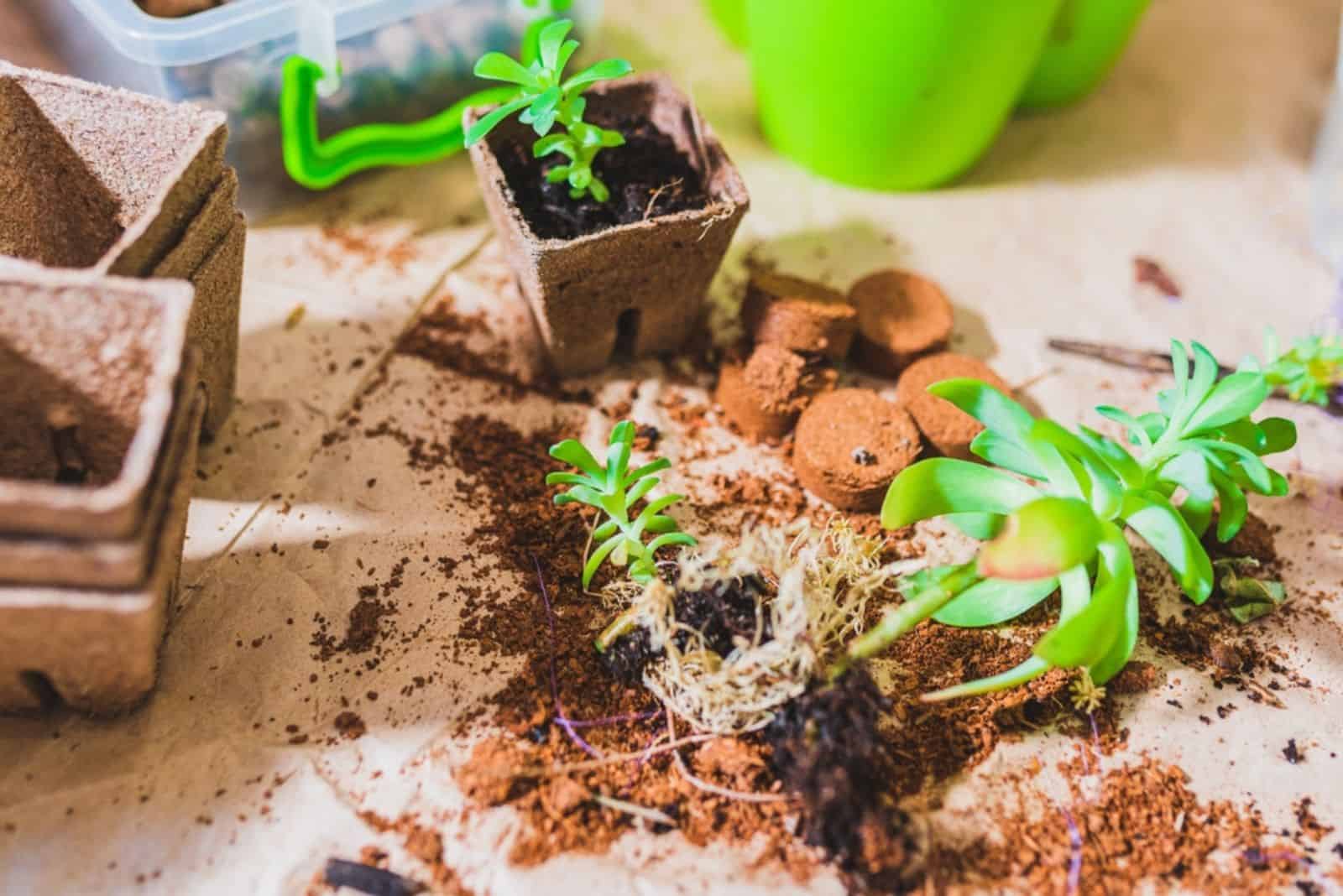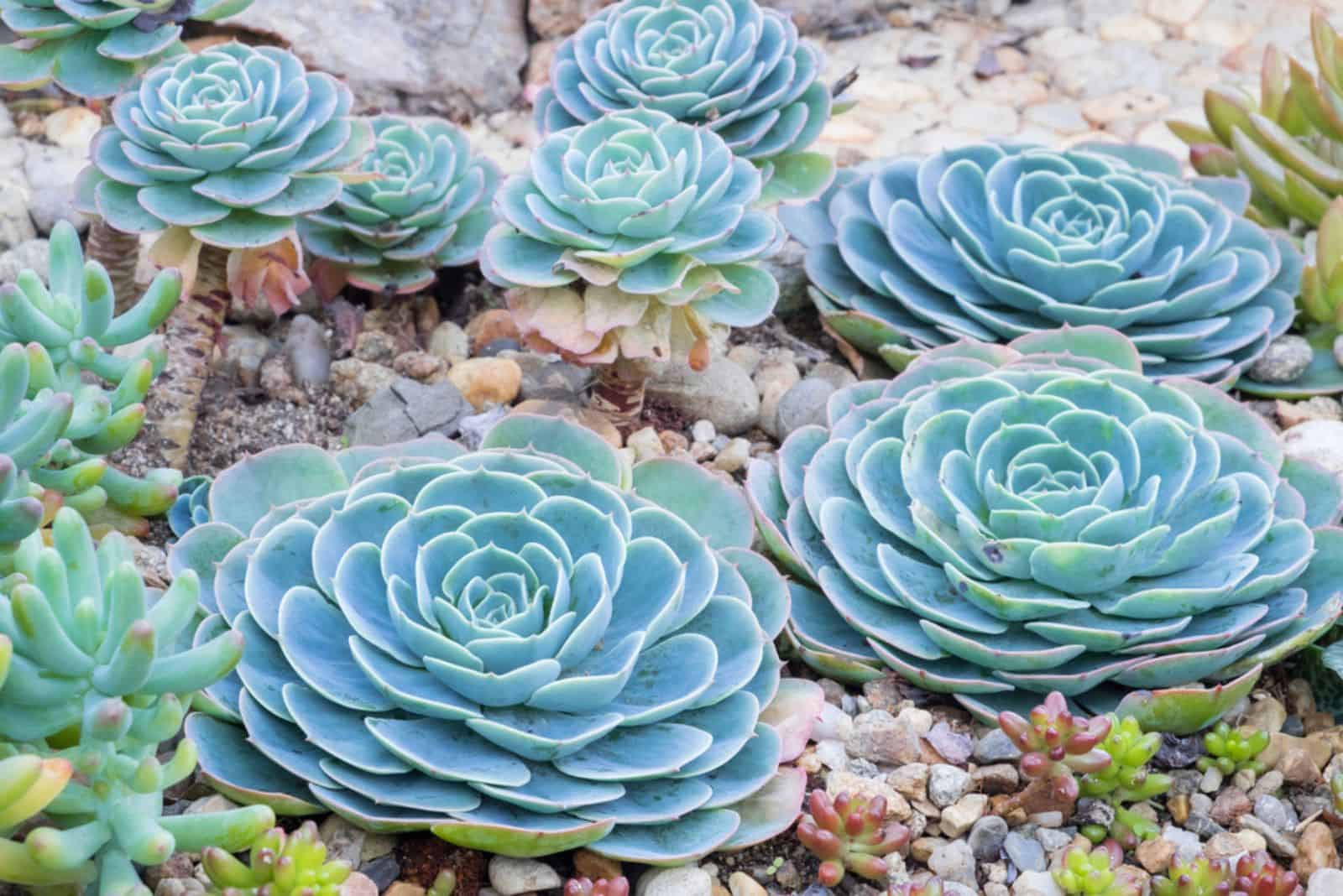When someone mentions succulents, I instantly think of the cute and smaller species. Well, some succulents remain small, but others can develop into pretty large plants.
In this article, I’ll answer one common question, how big do succulents get? I’ll also give you more details about the average size of indoor vs. outdoor succulents.
A few factors determine the size of a succulent plant, and there are ways you can enhance its development and make your green buddy grow bigger.
Let’s get started!
How Big Do Succulents Get When Grown Indoors?
Succulents cultivated indoors are typically smaller than those grown outdoors.
There’s one interesting thing about small succulents: they aren’t actually small – they’re slow growers and need a lot of time to reach maturity. Believe it or not, some of these plants can take decades to reach their full size.
Species with faster growth rates seem to be bigger, but the fact is they reach maturity pretty quickly.
The growth rate also depends on a few factors, including environmental conditions. Let’s look at some big and tall indoor succulents.
Biggest Indoor Succulents
You can never expect a fast-growing indoor succulent to reach the height it would outdoors or in its natural habitat. However, when compared to succulents with lower growth rates, they do get pretty tall. Here are some examples below:
Jade Plant
When some fast-growing succulents, such as jade plant varieties, are cultivated indoors, they‘ll grow approximately an inch per year. It takes the ovata species approximately 5 years to mature.
Irish Rose
Otherwise known as the Tree houseleek, the Irish rose is a fast-growing succulent plant that can reach 3 feet when grown indoors. Of course, you need to ensure you meet all the necessary conditions for the healthiest growth.
Crown Of Thorns
Euphorbia milii, aka Crown of Thorns, is a lovely species from the spurge family. If you grow this succulent species indoors, you can expect it to reach about 2 feet.
Pencil Cactus
If you want an indoor succulent that can reach around 6 feet tall, then the Pencil cactus is the perfect plant for you. You can expect it to grow approximately 20 inches every growing season. Believe it or not, this species can grow up to 30 feet in its natural habitat.
Snake Plant
When discussing the adult size and growth rate of snake plants, we need to take into consideration species, varieties, or cultivars. The most common species, the Mother-in-law’s tongue, typically reaches 3 feet, whereas its close cousin Cylindrica can grow up to 7 feet.
Kalanchoe
Scientifically known as Kalanchoe rotundifolia, the Common Kalanchoe has a fast growth rate and can reach 3 feet indoors under optimal conditions.
Aloe Vera
There’s one interesting thing about Aloe, it can reach 2 feet with a bit of neglect, but if you pay only a little more attention to its care, it’ll quickly reach 3 feet.
Desert Rose
The average size of the Desert Rose succulent when grown indoors is approximately 4 feet.
Smallest Indoor Succulents
Now it’s time to look at some of those cute little succulents you frequently see in terrariums or many species planted in the same pot.
Sempervivum
If you are looking for a plant that can fit literally anywhere, then Sempervivum is perfect for you. The largest Sempervivum I’ve seen indoors was about 6 inches.
Kalanchoe Pumila
Unlike its cousin Rotundifolia, Kalanchoe Pumila won’t exceed 12 inches when grown in an indoor setting.
Sedum Little Missy
It’s named Little Missy for a reason: this sedum variety typically reaches 4 inches indoors.
Blossfeldia Liliputana
The last on our list is the smallest succulent, a cactus, to be precise, Blossfeldia liliputana. It will only reach 0.5 inches indoors.
How Big Do Succulents Get When Grown Outdoors?
If you have enough space in your backyard, you can cultivate many tall succulent species. Some plants will reach a mature size close to that in their natural habitat.
For instance, Agave Americana can grow up to 30 feet outdoors in USDA hardiness zones 8 through 11.
Another example of a big succulent is the African milk tree, scientifically known as Euphorbia trigona. This species reaches 8 feet if you provide enough light and plant it in a mix of free-draining soil.
In the next section, I’ll explain what to consider when it comes to the size of a succulent and the best ways to promote further growth.
What Factors Determine The Size Of A Succulent?
We’ve seen that many succulents can grow pretty tall, but the fact is that some species take a lifetime to reach a substantial size.
Apart from the growth rate, other things need to be considered regarding the size of your succulent. Let’s find out what!
Light Exposure
Light is one of the most important factors in the development of all plant species. (1) For succulents, the light level should be high, i.e., these plants need direct sunlight.
One of the reasons for this requirement is due to the native habitats of succulent and cactus plants. As you may know, these species are native to deserts where they’re constantly exposed to direct sun.
Bright indirect light is also beneficial, especially for indoor succulents. The only problem is low light; succulents can become etiolated if they don’t receive enough light. Plants will be taller, but they’ll become pale and lifeless as time passes.
Type Of Soil And Moisture Content
Factors that should be considered when it comes to succulent soil are porosity, water-retention capacity, pH, and fertility. (2)
The perfect potting mix for succulent plants is porous, doesn’t contain ingredients that retain too much water, has a neutral pH, and contains vital minerals such as nitrogen, potassium, and phosphorus.
The closer you get to the soil described above, the bigger and healthier your succulent will be.
All succulents struggle to grow in overly wet conditions; remember, these plants are native to deserts where water sources are limited.
However, if you keep the soil moist without waterlogging it, you can encourage your succulent to grow bigger and reach its mature size sooner.
Growing And Flowering Season
You may have noticed that your succulent develops faster during certain seasons. The plant’s growing season also determines how big these plants will get in one year.
For instance, jade plants grow actively during the warmer summer months, when you will easily see a sudden increase in their growth.
On the contrary, some species, such as Senecio kleiniiformis, hibernate during summer and wake up as soon as fall approaches. If your plant isn’t showing any new growth, check its growing season.
Another aspect to consider is the flowering season. If you cultivate blooming succulents, such as Haworthia, you’ll notice it doesn’t develop new leaves or grow bigger when it’s in bloom. This is because all plants focus their energy on flower production during this period.
If you don’t want your succulent to generate flowers but focus energy on leaf production, simply remove the blossoms.
Container Size And Spacing
The size of the planter and the number of succulents planted in the same pot also affect the size of your succulent.
For instance, if your succulent or cactus outgrows its container, it won’t develop further. The main reason is the limited space for the roots to grow. You’ll notice the roots start poking through planter holes, which is a sign your succulent needs repotting.
On the other hand, if you plant your succulent in a slightly larger container, it will grow bigger faster because the roots will have enough room. But you need to be careful with this; if the roots have too much growing substrate around them, they could rot, as the surrounding soil retains water.
Some growers prefer planting more succulent species in the same pot. This method gives fantastic results regarding appearance, but it has an effect on the size of each species planted in the pot.
The reason is simple: if you plant your succulents too close to each other, the root systems will have limited space to expand, which will result in smaller plants.
How To Make Succulents Grow Bigger?
Below you’ll find some tips for enhancing the growth of your succulent and maintaining its vigor.
• Move your indoor succulents as close to a south-facing window as possible. This will provide your plant with enough bright light to avoid etiolation.
• Water more often. Yes, these are drought-tolerant species that don’t require frequent watering, but if you irrigate more often, it can enhance growth. Still, you need to be careful not to overwater them, as that’s the easiest way to kill a succulent.
• Use store-bought potting mix. This technique is perfect for beginner growers; it may be hard to understand soil structure initially, and soil amendment may seem even harder. To avoid any issues, simply purchase a potting mix designed exclusively for succulents and cactuses.
• Use porous containers with holes at the bottom. One of the ways to improve drainage in the soil is by using porous and breathable containers. I highly recommend using planters made of terracotta or ceramic pots.
Wrapping Up
There’s no single answer to the question, “How big do succulents get?” A few factors, such as light, soil type, drainage, season, and pot type, play essential roles in the size of these plant species.
If you have a slow growing succulent, it’s not small – it just needs a lot of time to reach its mature size. You’ve seen that some of these plants and succulents can get pretty big indoors.
Now that you know all about the size of succulents, it’s time to purchase (at least) one plant!
References
1. Lighting for indoor plants and starting seeds. (n.d.). UMN Extension. https://extension.umn.edu/planting-and-growing-guides/lighting-indoor-plants#:~:text=All%20plants%20require%20light%20for,are%20depleted%20and%20plants%20die.
2. Prisa, Domenico. (2019). Quality improvement of cacti and succulents with alternative substrates.





